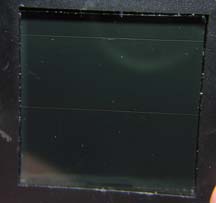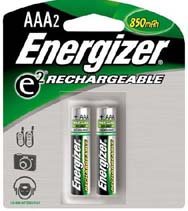 |
Bad LED Path Light II (February
17, 2011) |
My
wife knows I love LED products. A while back she spotted a solar powered LED
path light at the dollar store. Stores like that are flooded with
discontinued or surplus products taken off the shelf at other stores and sold at
the dollar store for deep discounts. After removing the plastic insulator
from the battery terminal, allowing the battery to be connected to the path light
circuit, I stuck the thing in the ground in a sunny part of my front lawn. I
let the light absorb some sunlight all day.
|
|
| Later
that evening I noticed the light did not turn on. I covered the solar panel with
my hand and saw that the light still did not turn on. It was time to crack open
the thing and see why it was not working. Sure enough, a wire to the LED had
broken off from the circuit board. After re-soldering the wire, the thing sprung into
life. But, I was pretty disappointed by the light the LED produced. Here
are the overall specs for this device. |
|
|
| |
| The
glass covered solar cell area measured 1.6” x 1.6” for a total area of 2.5 square
inches. I measured an open circuit voltage of 3v from the solar panel and a
short circuit current of 25ma. It appeared that the solar panel was a thin film
amorphous type. Even at peak efficiency, the total power generated by this path
light solar panel was a dismal 75mw. Sunlight produces a power flux of about 100
watts per square foot or about 700mw per square inch. With 2.5 square inches of
area, about 1.75 watts worth of sunlight hits the solar panel. If the solar panel was
generating only 75mw, that says that this solar panel has an efficiency of only 4%.
Good solar cells can easily reach an efficiency of 15%. Some of the best units exceed
20%. So, had the manufacture used a better quality solar cell technology, I would
have seen more than three times the power generated as this unit. |
 |
Inside the
path light assembly I saw a single AAA NiCd rechargeable battery with a marked
rating of 300ma-hours. I thought NiCd batteries were not being used in
products like this anymore, but here is one that does. An AAA NiMH
battery
would have been a better choice. Also, most quality AAA NiMH
cells have a
rating closer to 900ma-hours, which is three times the rating of this battery. |
|
Path Light 3v Solar Panel |
|
|
 |
 |
|
Path Light Circuit Board and Battery |
AAA NiMH
Cells |
|
| In
addition to the LED, there were only two other components on the light’s circuit
board. I saw a 4 pin custom IC and an inductor. This tells me that the inductor
is used to boost the 1.2v from the battery to the higher voltage needed by the white
LED. I was surprised that there were no capacitors or any other components,
which would make a more robust circuit design. |
| During
lamp operation, I measured a current of 12ma from the 1.2v battery. This meant
that the system consumed about 15mw of power. Such a power level was pretty
small. If we were to assume an 80% converter efficiency, the 15mw of power from
the battery would mean 12mw was routed to the LED. If the typical forward
voltage for a white LED was about 3.2v, that would put the LED drive current at only
3.7ma. No wonder this thing was dim. Much more light would have been produced
if the LED received about 20ma of current. |
| If a
typical sunny day has about 6 hours of sunlight and the battery received 25ma of
charging current from the solar panel, then the most that the solar panel could do in
a day is 150ma-hours. Winter nights can often be 16 hours long, so if the
circuit were to draw 12ma for 16 hours, that would total up to 192 ma-hours. That
current drain exceeds the milliamp hours pumped into the battery. Only if the
nighttime were 12 hours long, would the total milliamp-hours of battery charging
current exceed the milliamp-hours of outgoing battery power. In summary,
although this light worked, it is dim and most likely would not make it through the
night before running out of juice. Have you ever looked at path lights you own early
in the morning, before sunrise? Are they still working then? I would bet
that many do not. |
| I found
it puzzling why the solar panel selected for this design generated 3v, when during
charging, the NiCd battery only needs about 1.36v. It seems that fully half of
the available power from the solar panel was being thrown away. A three cell
panel, with an open voltage of about 1.5v would have made more sense. |
| Also, I
did not see any CdS photocell as a daylight sensor. This design must use the
solar panel itself as a light sensor. That seems like a good idea; perhaps the only
good thing about this overall product. |
| |
|
Better Design?
If it were me, I would have taken a different, albeit more expensive,
route. I would have started with a three AAA cell NiMH
battery pack with an
800ma hour rating. That would put the available voltage at 3.6v and the battery
pack should be able to store about 2.8 watt-hours. I would use a 10 cell solar
panel, which would crank out about 4 volts, which is just right for the three NiMH
cells. I would make sure that the 10 solar cells nearly filled the available 2.5
square inches of space on the panel. They should pump about 50ma of current into the
battery. Over a period of 6 hours, the 300 milliamp-hours of energy pumped into
the battery. That should exceed what was taken out at night. There would
then be some left over in the battery to take care of cloudy days. I would use the
battery voltage to drive the 3.2v white LED with a constant current of about 20ma.
Like the path light my wife bought, I would turn on the LED when the voltage across
the solar cell reached a certain voltage. The result would be a much brighter
and more practical path light, which would run through the night. |